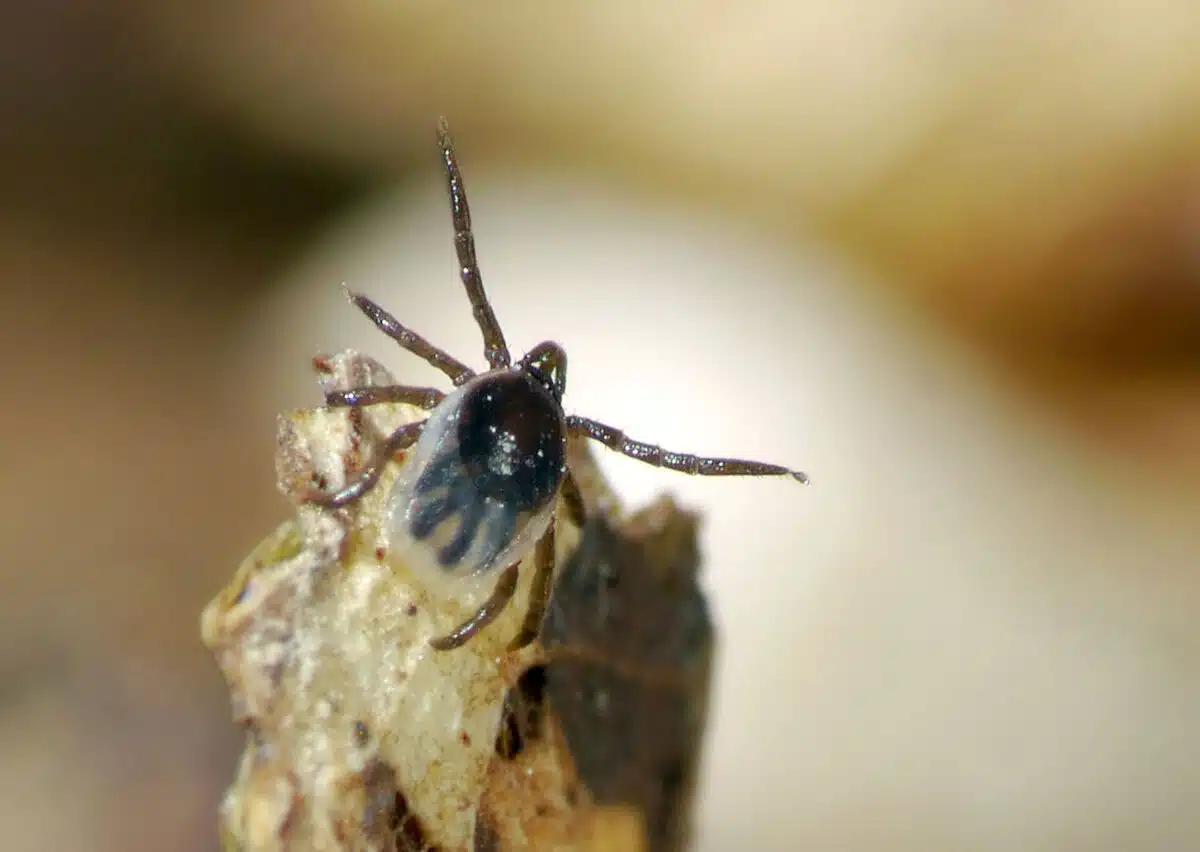EDGEWOOD, Md. — A potentially fatal tick-borne disease, once largely confined to New England, is now spreading into new territory. Babesiosis, caused by the parasite Babesia microti, has made its way south into the Mid-Atlantic states, including Maryland, Virginia, Delaware, Washington D.C., and West Virginia, prompting concern among scientists and health officials alike.
Unlike Lyme disease, babesiosis does not respond to standard antibiotics and can quickly escalate into a life-threatening condition if not diagnosed and treated correctly. As its range expands, many doctors in newly affected regions remain unprepared to recognize or manage the illness, raising serious public health concerns.
What Is Babesiosis?
Babesiosis is caused by a parasite that infects and destroys red blood cells. Early symptoms often mimic the flu—fever, chills, fatigue, muscle aches—but can escalate to jaundice, fainting, and even death in severe cases. Those over 65, immunocompromised, or without a spleen are especially vulnerable.
Transmission occurs through the bite of the blacklegged tick (Ixodes scapularis), also known as the deer tick—the same species that spreads Lyme disease.
Climate Change and Deer Populations Fuel Expansion
Lead researcher Ellen Stromdahl, a retired entomologist from the Defense Centers for Public Health-Aberdeen, attributes the parasite’s southward spread to multiple factors:
-
Warmer winters from climate change have allowed ticks and their rodent hosts to survive and reproduce more effectively.
-
Increased precipitation supports lush vegetation and habitat for ticks.
-
Reforestation and white-tailed deer overpopulation have further helped ticks travel and settle into new areas.
“The deer don’t carry Babesia, but they transport the ticks that do,” Stromdahl explained.
New Study Reveals Alarming Spread
A comprehensive study published in the Journal of Medical Entomology outlines the expansion of babesiosis:
-
Maryland reported its first locally-acquired case in 2009, followed by:
-
Washington D.C. in 2013
-
Virginia in 2016
-
West Virginia in 2017
-
Researchers collected over 1,300 ticks between 2010 and 2024 in Delaware, Maryland, and Virginia. Of those, 2.7% carried B. microti. Certain hotspots had infection rates as high as 12.5%. Half of the infected ticks also harbored the Lyme disease bacterium, and one carried three pathogens: B. microti, Borrelia burgdorferi (Lyme), and Anaplasma phagocytophilum (anaplasmosis).
Hotspots Identified in Delmarva and Baltimore Metro
Two major outbreak regions emerged:
-
The Delmarva Peninsula (spanning parts of Delaware, Maryland, and Virginia) accounted for 11 of 30 human cases.
-
The Baltimore Metro Health District saw five cases between 2018 and 2022.
“Ticks that have been established longer in an area are more likely to carry Babesia,” Stromdahl said.
As recently as 2025, Virginia confirmed five new local cases on the state’s Eastern Shore—evidence that the spread is active and ongoing.
Blacklegged Ticks: What to Know
The blacklegged tick differs from others by:
-
A plain, dark central shield (scutum) with reddish-brown flanks
-
Long mouthparts
-
No white dorsal spots, unlike the Lone Star tick
-
No ornate patterns, ruling out the American dog tick
Adult females are reddish-brown and may appear lighter under bright light.
Why This Matters for the Public
Ticks carrying multiple pathogens can transmit co-infections that make symptoms more severe and treatment more complicated. Babesiosis is especially dangerous because:
-
Symptoms appear weeks after a tick bite
-
It doesn’t respond to doxycycline, the common antibiotic used for Lyme
-
It is often misdiagnosed or overlooked by healthcare providers outside the Northeast
“Doctors often don’t think to test for it,” said Stromdahl. “But untreated, babesiosis can be fatal.”
Healthcare Systems Must Catch Up
The study warns that healthcare providers in newly affected states must begin screening for babesiosis when patients present with flu-like symptoms following potential tick exposure.
Babesiosis is treated using antiparasitic medications, such as atovaquone and azithromycin, not antibiotics like doxycycline.
Medical providers are urged to:
-
Include tick-borne parasites in differential diagnoses
-
Educate themselves on non-Lyme tick infections
-
Promptly test for coinfections when Lyme disease is suspected
Tick Collection and Study Methods
Researchers used flagging, dragging, and dry ice traps to collect ticks from fields, forests, and grassy areas. They also trapped rodents to collect ticks feeding on them. Ticks were tested using PCR techniques to detect DNA from pathogens like Babesia microti, Borrelia burgdorferi, and Anaplasma phagocytophilum.
Surprisingly, the team also discovered Babesia microti in Ixodes keiransi, a tick species not known to bite humans—highlighting potential reservoir spread among wildlife.
Symptoms to Watch For
If you’ve been bitten by a tick and experience any of the following within a few weeks, seek medical attention:
-
Fever and chills
-
Sweats and headaches
-
Nausea and fatigue
-
Loss of appetite
-
Jaundice or fainting
These may indicate babesiosis. Always save the tick if found on your body and note the date of the bite.
Underdiagnosed and Underreported
One major limitation of the research is patchy surveillance across the region. Not all counties were included, and many human cases may go undetected due to lack of awareness or proper testing.
Delaware, for example, reported 22 confirmed cases between 2015–2022 but did not interview patients to determine if infections were acquired locally.
What Should the Public Do?
According to Stromdahl:
-
Use insect repellent when outdoors
-
Check for ticks daily, especially after walks in wooded or brushy areas
-
Remove ticks quickly and carefully
-
Save the tick and request testing if symptoms arise
“Ticks don’t eat plants or insects. They only want one thing—your blood,” she warned. “They come to you.”
Final Thoughts from the Research Team
This study is a wake-up call. Tick-borne disease is no longer limited to New England. Public health systems, healthcare providers, and the general public must prepare for the continued expansion of babesiosis and other tick-borne diseases.
“Public awareness and provider education are essential,” Stromdahl concluded. “We’ve entered a new chapter in tick-borne disease risk, and our preparedness must reflect that.”
Study Citation
Title: Emerging babesiosis in the mid-Atlantic: autochthonous human babesiosis cases and Babesia microti…
Published: April 22, 2025, Journal of Medical Entomology
Authors: Ellen Y. Stromdahl et al.
Funding: CDC, Delaware DNREC, National Capital Lyme Disease Association, and others
No conflicts of interest declared.












Leave a Reply